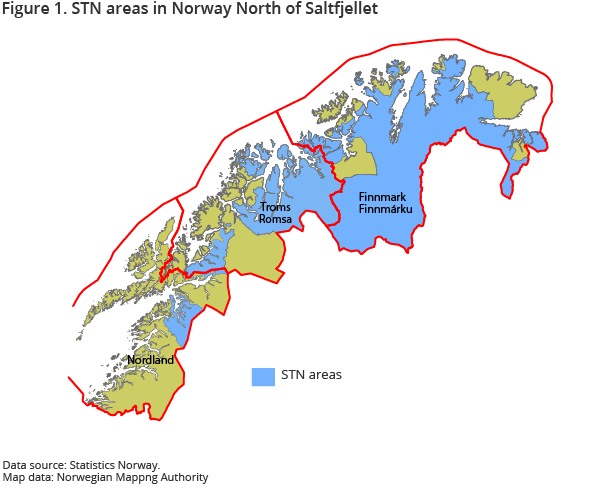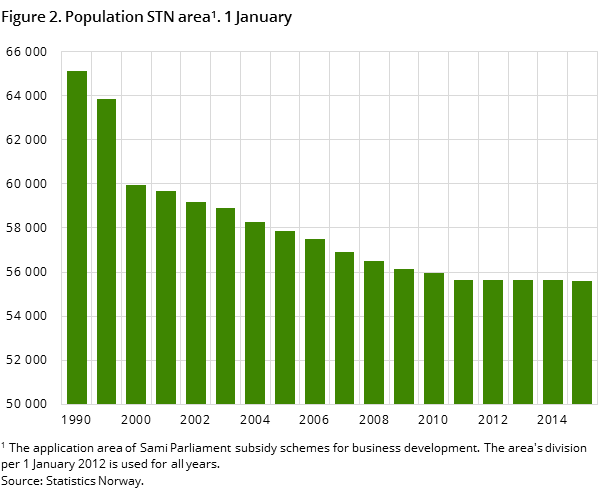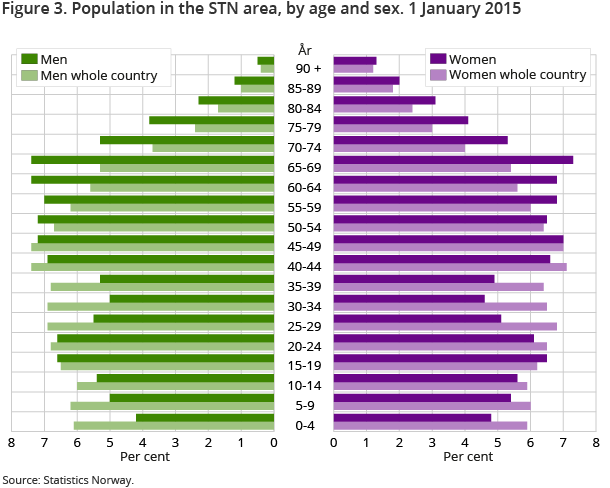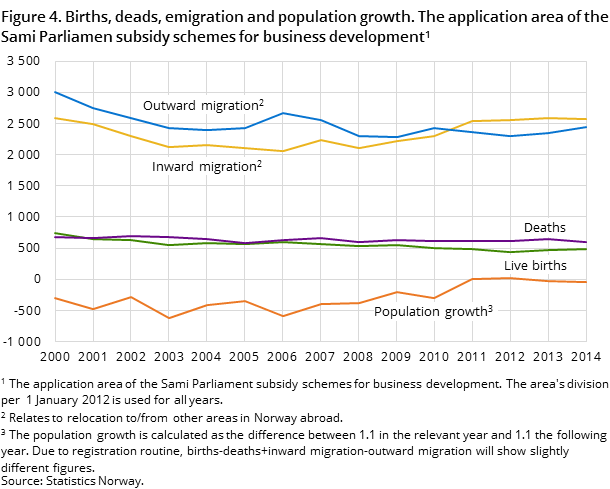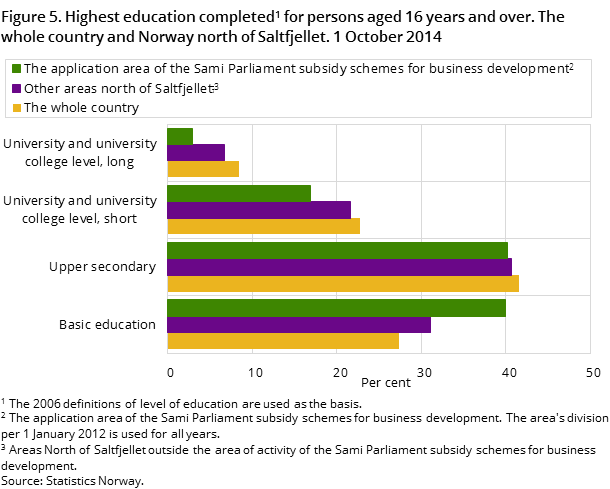Immigration pushing up population
Published:
The Sami areas north of Saltfjellet mountain range have not experienced the same major population growth that has been seen in the rest of Norway in recent years. However, there are some immigrants who have found their way to the Sami parts of the country, and this has stabilised the population at the 2010 level following decades of a population decline.
- Full set of figures
- Sami
- Series archive
- Sami (archive)
The report on Sami statistics 2016 (in Norwegian only) presents statistics that are relevant to Sami society in Norway. The statistics have a primarily geographical approach, with the emphasis on Sami settlement areas north of the Saltfjellet mountain range, which lies on the Arctic Circle. The area is called the area of the Sami Parliament subsidy schemes for business development (STN). The report contains statistics about Sami Parliament elections, population, education, the Sami language in kindergartens and schools, income, employment, reindeer herding, agriculture and fishing.
In 2015, the STN area comprises of 21 entire municipalities and 10 municipal subareas. Of these 31 municipalities, 13 are in the county of Finnmark, 14 are in Troms and 4 are in the northern part of Nordland.
The STN area accounts for around 60 per cent of the area in Norway north of Saltfjellet, but only for 14 per cent of the population. Of those who live in densely populated regions north of Saltfjellet, 7 per cent live in the STN area and 93 per cent live in the rest of the area. The rest of the area is on the outskirts of Norway north of Saltfjellet, and is defined as a Sami settlement area. All the towns and larger communities are outside the STN area.
Stable population in recent years
As of 1 January 2015, 55 600 persons lived in the STN area. The population decreased by 15 per cent from 1990 to 2011, and every year in the period 2000-2010 more people moved out of the area than in to it. While most of those who move out of the area are young, the area has an older population than the rest of the country, with a higher number of people aged 55 years or over. The number of people aged 25-39 years in the STN area is also smaller than in the whole country, for both men and women. This also leads to fewer children in the age group 0-9 years in the STN area than in the whole country.
However, the fall in the population seems to have stopped, at least temporarily. Since 2011, there have been more people moving in to the STN area than out, and the population figure has been stable at around 55 600. However, without immigration, the population would still be decreasing. The number of people without an immigrant background is sinking steadily by 400-600 every year, while the number of immigrants and Norwegian-born to immigrant parents is increasing year by year. Since 2000, the number of people without an immigrant background has decreased by 7 100, and the number of immigrants and Norwegian-born to immigrant parents has increased by 2 750. Since 2011, the decline in the population without an immigrant background has almost been offset by the growth of people with an immigrant background.
Fertility among women in the STN area was higher than for women in the rest of the country until 2002. Since then it has been lower most years.
Life expectancy is somewhat lower for both sexes in the STN area than for the whole country. A girl born in the STN area in 2012-2014 can expect to live 82.6 years, and a boy 77.9 years. For the country as a whole, the figures are 84.1 and 80.0 years respectively.
One in four women have a tertiary education
In the STN area, 80 per cent have a primary, lower secondary or upper secondary education as their highest education. The corresponding figure for the country as a whole is 69 per cent. Twenty-six per cent of women and 14 per cent of the men in the STN area have a tertiary education. The educational level in the STN area is lower than in other areas north of Saltfjellet and in the country as a whole.
Native language
As of 1 October 2014, 2 116 pupils in compulsory schooling were taking the Sami language as a school subject. A total of 915 pupils had Sami as their 1st language. The number of pupils with Sami as their 1st language is stable. The number with Sami as their 2nd language has decreased by 42 per cent since 2005, but has remained fairly stable in the last few years.
Employment
Sixty-four per cent of people aged 15-74 years in the STN area were employed in the 4th quarter of 2014. This figure is 4 percentage points lower than for the rest of the area north of Saltfjellet. In the country as a whole, 68.5 per cent of the population aged 15-74 years were employed. In the STN area the number of men who work in agriculture, forestry and fishing is significantly higher than for the rest of the area north of Saltfjellet and the country as a whole.
Otherwise, the majority of the men work in wholesale and retail trade, hotels and restaurants and construction, while the majority of women work in health and social services, not unlike the country as a whole.
Contact
-
Even Høydahl
-
Tove Irene Slaastad
-
Statistics Norway's Information Centre

